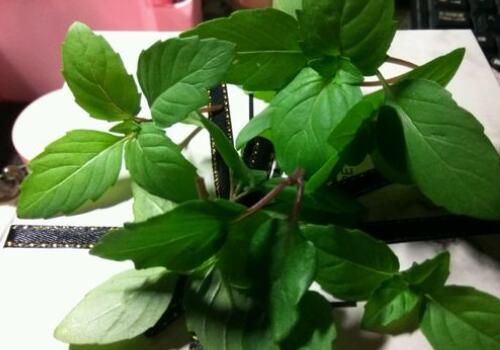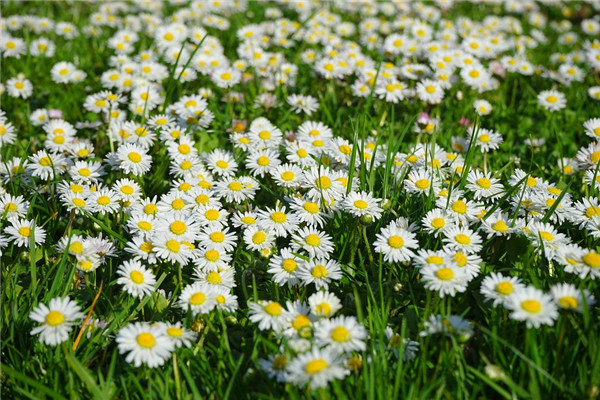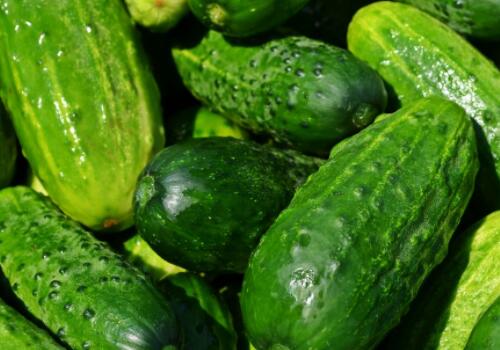What is the difference between perennial basil and Schizonepeta tenuifolia? What is the efficacy? How to grow potted plants? How to apply fertilizer?
Basil is a fragrant plant for both medicine and food, which tastes like fennel, also known as nine-story pagoda, Jinbu, St. Joseph grass, sweet basil, orchid incense, like warm and humid climate. What's the difference between basil and Schizonepeta tenuifolia? What is the efficacy? How to grow potted plants? How to apply fertilizer? According to the data of Labiatology, basil has the functions of soothing wind and promoting qi, dissolving dampness and eliminating food, promoting blood circulation and detoxification. It is used for the treatment of exogenous headache, flatulence and qi stagnation, epigastric pain, diarrhea, irregular menstruation, falling injury, snake bite, skin eczema, addiction rash, pain and itching, etc.

What's the difference between basil and Schizonepeta?
1. Compared with the two, the leaves of Schizonepeta tenuifolia are relatively small and narrow, while the leaves of basil are relatively wide, and the leaves of Schizonepeta tenuifolia are relatively smooth, without obvious wrinkles, so they are relatively straight and straight. By contrast, the folds of basil leaves are more obvious, and the sense of concavity and convexity is very strong.
2. The taste of the plant Schizonepeta tenuifolia is very heavy and very pungent. In contrast, the taste of basil is milder and less pungent than that of Schizonepeta tenuifolia. So we can also distinguish basil from Schizonepeta tenuifolia by smelling both of them.
3. The petiole of mature basil is dark and purple, and the petiole of basil is very smooth and without fluff. The petiole of Schizonepeta tenuifolia is as green as the leaves, but the petiole of Schizonepeta tenuifolia is covered with fine soft fluff. In addition, there are some small white burrs on the petiole of Schizonepeta tenuifolia. From this point, we can well distinguish basil from Schizonepeta tenuifolia.
4. Basil and Schizonepeta tenuifolia flowers are relatively small, but basil flowers are purple and have a heavier smell, which will attract some small insects. And the flowers of Schizonepeta tenuifolia are white. Basil and Schizonepeta tenuifolia can be distinguished by the color of the flowers.
How to plant basil plants?
1. Choose the variety you want to plant.
2. Sow seeds indoors. Sow seeds indoors 4-6 weeks before the last frost. Basil likes to be warm and sunny, and it is safer to sow seeds indoors, which can prevent basil from being attacked by frost.
3. Prepare containers and soil for sowing. Fill square basins or separate containers with the same amount of vermiculite, perlite and peat. Gently press the soil to remove air. Wet the soil with water to prepare the right environment for seed germination.
4. Sow seeds. Bury one or two seeds in each container and gently cover it with a layer of soil. Wrap the flowerpot with plastic film to keep the soil moist. Put the flowerpot under the window of the morning sun, uncover the film twice a day, and sprinkle water into the soil to keep it moist.
5. Remove the plastic film after seed germination. When you see the first bunch of tendril-shaped green seedlings coming out of the soil, it's time to remove the film. Water the buds twice a day and don't let the soil dry out completely. When the plant grows to a few centimeters tall and the leaves gradually mature, the basil can be moved to a large container.
6. When basil grows 1 or 2 mature leaves, you can move basil to the garden or formal flowerpot. Basil is not resistant to cold, so don't move outdoors too early. It is best to move the basil to a place with plenty of light and plant it in a well-drained soil.
Keep the soil moist, but don't make it watery. Basil can only grow well in well-drained soil and cannot be soaked in water all the time. For mature basil, water should be watered once every morning to give basil sufficient time to absorb and evaporate water and prevent the soil from drying at night.
8. Pinch off the flower. When basil blossoms, pinch off the flower and the two leaves under it. Flowering changes basil's hormones, reduces basil's aroma, and makes basil grow fewer leaves. This kind of blossom and seed-bearing phenomenon often occurs when there is plenty of sunshine. If you don't pinch off the flower, you will find that the leaves of basil are getting thinner and longer, and they will not be as fragrant as before.
9. Pay attention to pests and molds. Basil attracts Japanese beetles easily. The best way to get rid of pests is to pick out the beetles and catch them. If your basil tends to be attacked by mold, it proves that they may not be sunny enough or grow too dense. Dig out the small basil and give the big basil plenty of space to grow.
How does basil fertilize?
Basil planting should keep the soil moist in the field, do a good job of ploughing and weeding in time during the growth process, and urea topdressing 15kg per 667 square meters. When the plant is budding, the buds should be removed in time to reduce nutrient consumption, and the heart should be picked in time in the middle and later stages of picking to promote the occurrence of more lateral branches. it can also be used for extra-root topdressing with 0.2% potassium dihydrogen phosphate or 0.2% urea solution. spray evenly on the leaves in the early morning or evening. At the same time, if possible, irrigate every 15 days to ensure its full growth.
Time: 2019-04-09 Click:
- Prev

How much is the perennial herb chrysanthemum seed per jin? How do you plant it? How long will it blossom?
Chrysanthemum, also known as Huang Hua, Jin Ying, Tao Ju, etc., is a common perennial herb in China. It is cultivated because of its high ornamental and medicinal value. How much is the chrysanthemum seed? How do you plant it? How long will it blossom? Seed price: the price of chrysanthemum seed is about 40-50 yuan per jin.
- Next

How many jin of grafted cucumber per mu? What is the best way to graft? How is it grafted? Attached cucumber seedling raising method
Cucumber, also known as cucumber, thorn melon, king melon, Qin melon, cucumber, Tang melon, hanging melon, is widely cultivated in various parts of China, and many areas are cultivated in greenhouses or plastic greenhouses. How many jin of grafted cucumber per mu? What is the best way to graft? How is it grafted? What are the methods of raising cucumber seedlings? Learned from Mr. he, the cucumber grower.
Related
- Fuxing push coffee new agricultural production and marketing class: lack of small-scale processing plants
- Jujube rice field leisure farm deep ploughing Yilan for five years to create a space for organic food and play
- Nongyu Farm-A trial of organic papaya for brave women with advanced technology
- Four points for attention in the prevention and control of diseases and insect pests of edible fungi
- How to add nutrient solution to Edible Fungi
- Is there any good way to control edible fungus mites?
- Open Inoculation Technology of Edible Fungi
- Is there any clever way to use fertilizer for edible fungus in winter?
- What agents are used to kill the pathogens of edible fungi in the mushroom shed?
- Rapid drying of Edible Fungi

